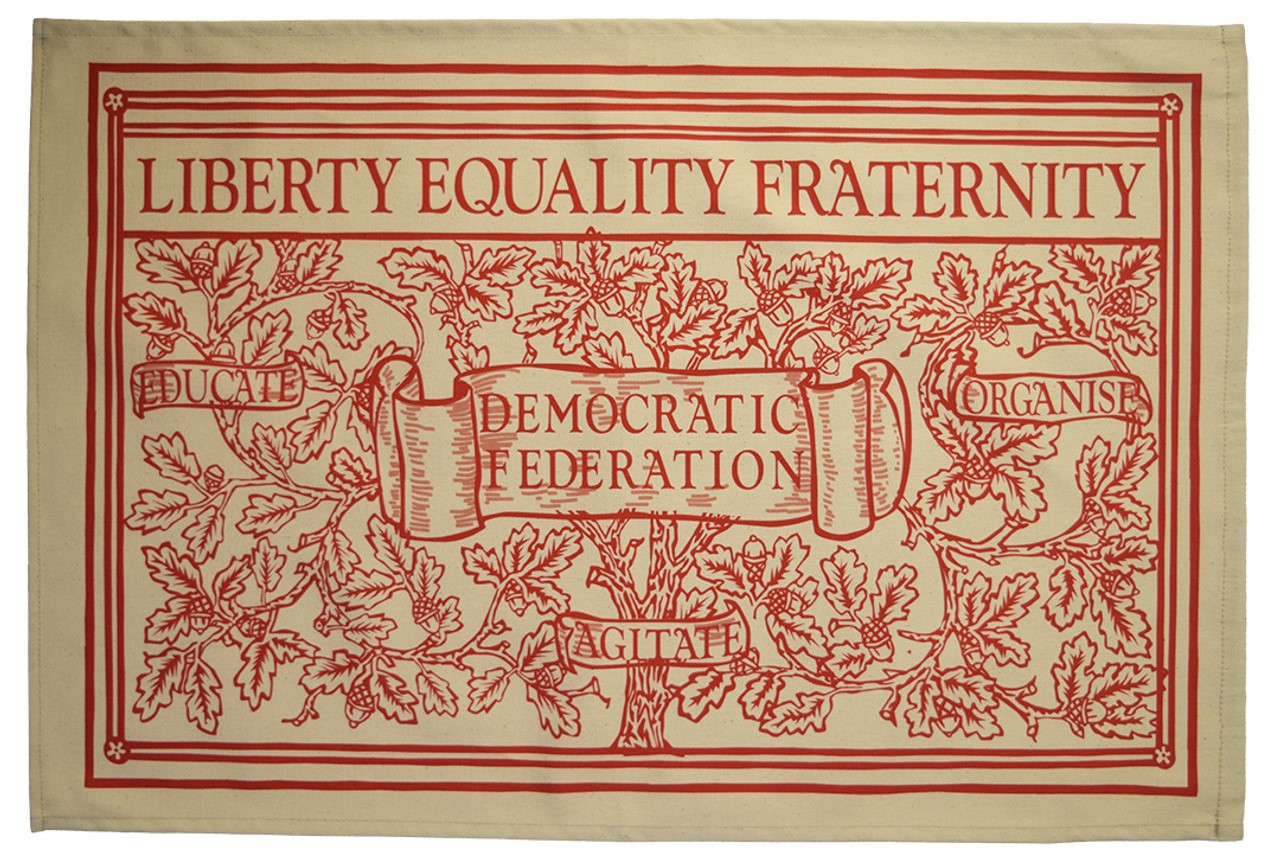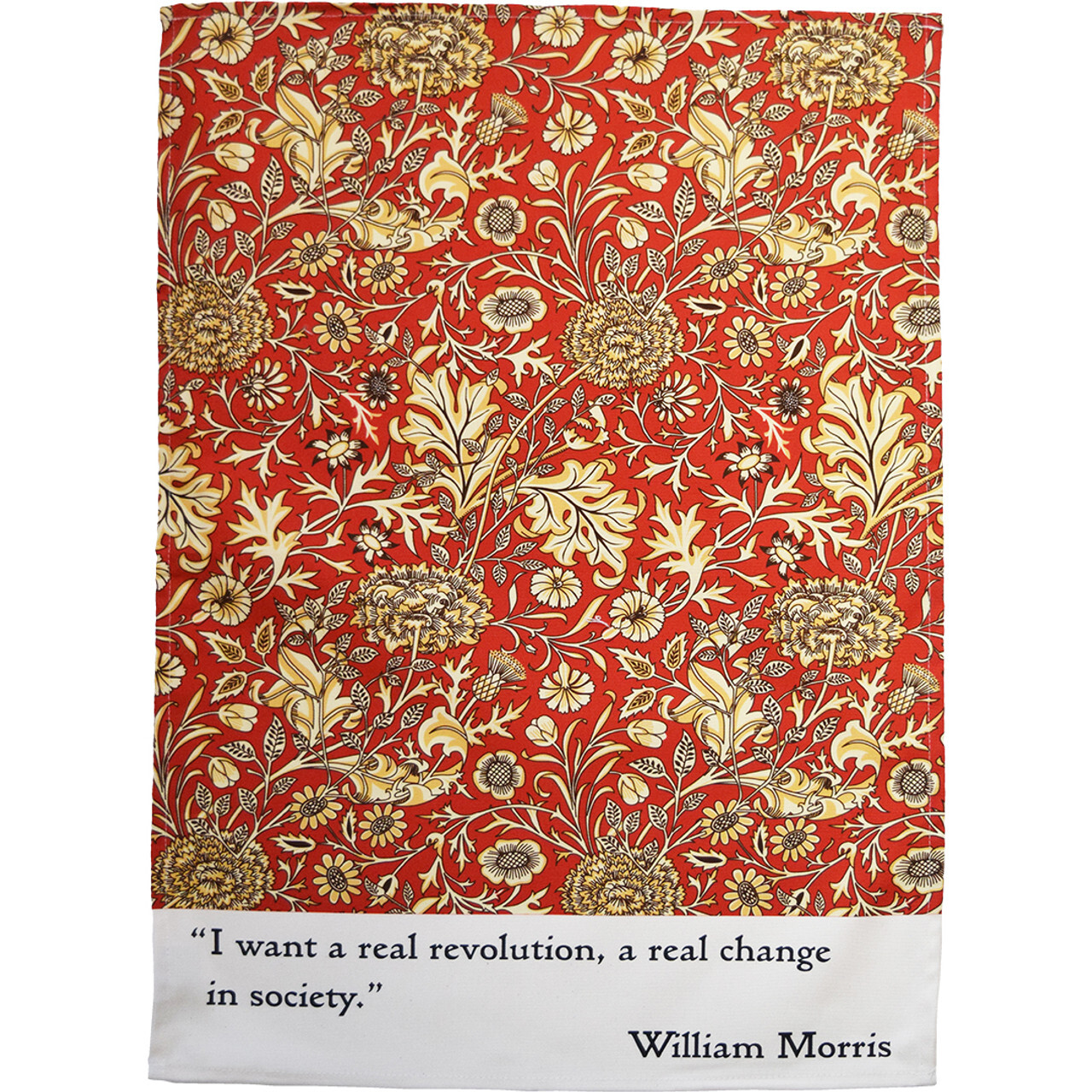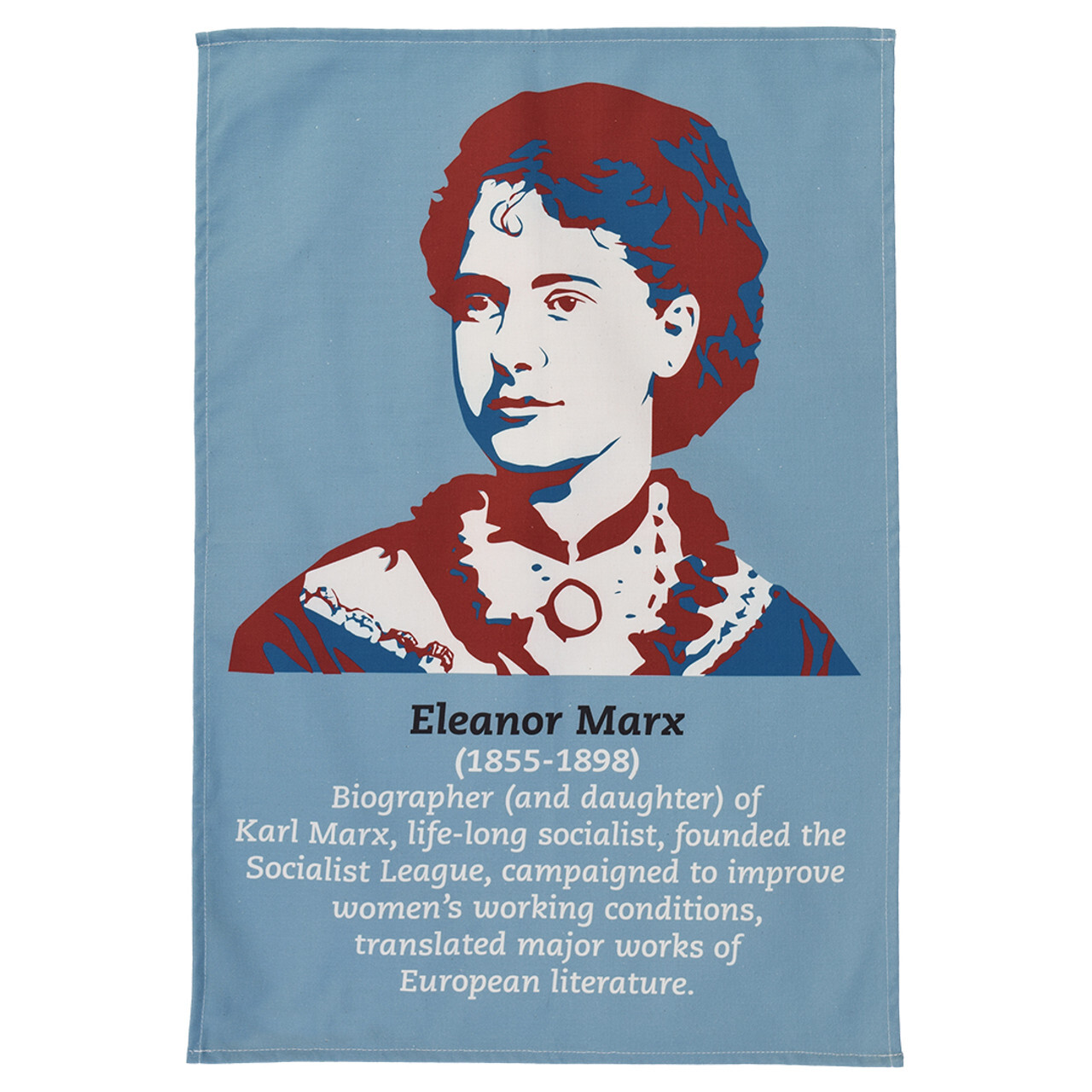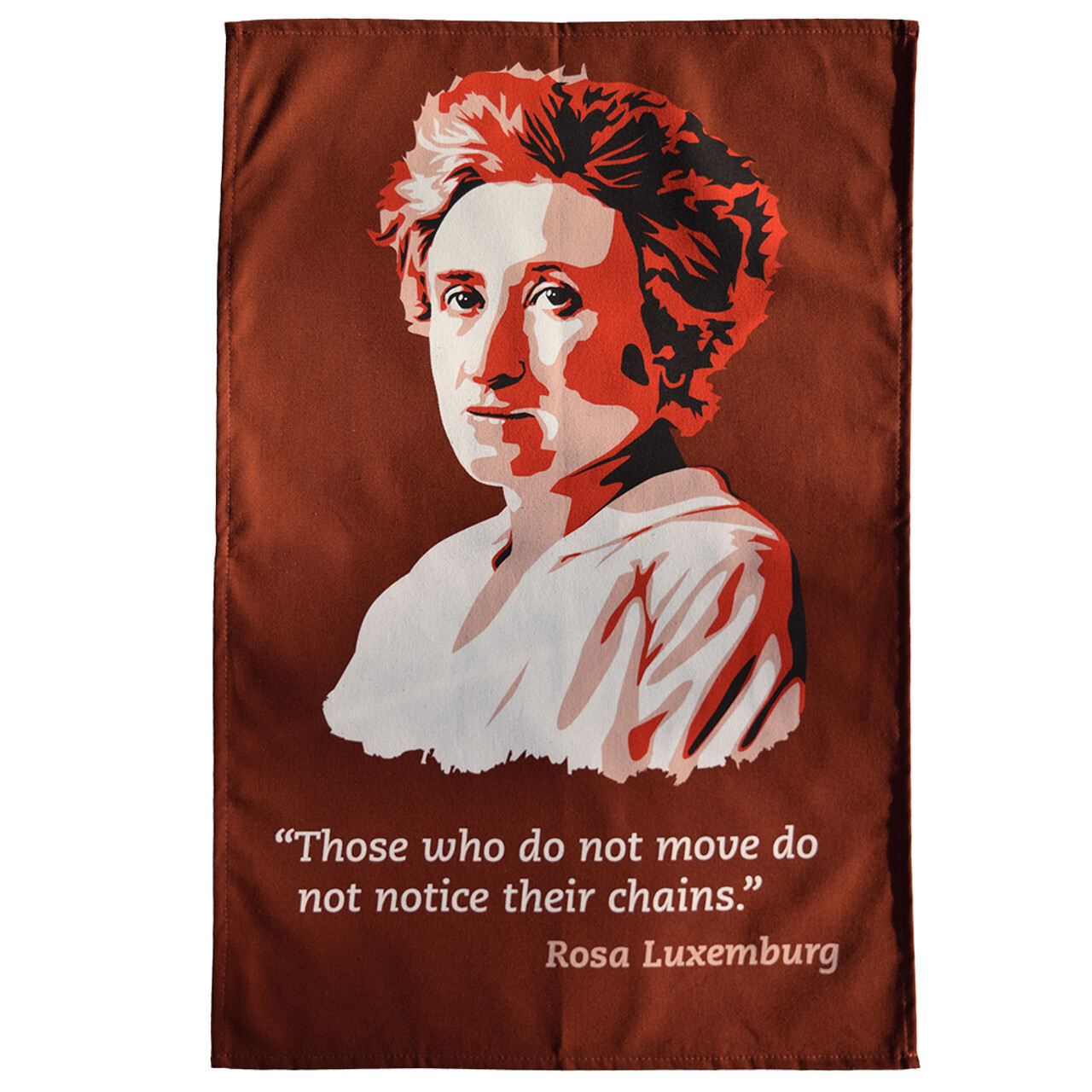We use cookies to make your shopping experience better. By using our website, you're agreeing to the collection of data as described in our Privacy Policy.
Heard of the Social Democratic Federation?
The founding organisation of British Marxism suffered from ego and factionalism but was an important step for socialism in Britain
The Social Democratic Federation (SDF) was created on this day in 1881.
And it was... a bit messy.
The SDF was the first Marxist political formation in British history, but Karl Marx and Friedrich Engels themselves didn’t even like it.
Membership card of the Social Democratic Federation - designed by William Morris
See the Liberty Equality Fraternity tea towel
The Party’s leader, Henry Hyndman, was an ex-Tory convert who was by all accounts detestable, convincing many members, like William Morris and Eleanor Marx, to leave.
And whereas the SDF was formed as a radical alternative to mainstream labour politics in Victorian Britain, it ended up being one of the founder organisations of the UK Labour Party.
Yet for all this messiness, the SDF represents a key moment in the entangled histories of the British labour movement and British Marxism – a key moment in Britain’s radical past.
William Morris had early involvement with the SDF. We've recently launched a new collection inspired by the great socialist designer.
See the new William Morris designs
In 1880, Hyndman (1842-1921) read Marx and Engels’ Communist Manifesto.
Hyndman was a member of the British elite. The son of a wealthy bourgeois family, he was Cambridge-educated and a fervent imperialist.
Hyndman had even played first-class cricket for Sussex...
But he was converted to Marxism by the Manifesto. And once back in London, Hyndman met Marx himself.
In 1881, Hyndman published England For All, which used Marxist economic theory to criticise the existing order of things in Britain.
The book constantly took ideas from Marx’s Das Kapital without any acknowledgement.
Marx was understandably annoyed, unfriending Hyndman. But Marx did acknowledge the political value of Hyndman’s book for spreading his ideas in Britain.
"...his little book – so far as it pilfers from Kapital – makes good propaganda."
The same year as England For All, Hyndman established what became the Social Democratic Federation on 7 June 1881.
The SDF was meant to provide political leadership for the working class in Britain.
It did so with an ambitious social program, including demands for a 48-hour week, the abolition of child labour, gender equality, and public ownership.
The SDF’s commitment to revolutionary social change attracted several leading figures of the Left in Britain, including Eleanor Marx, William Morris, and James Connolly.
But the excitement didn’t last.
Eleanor Marx, founding member of the Social Democratic Federation
See the Eleanor Marx tea towel
SDF members quickly realised Hyndman intended to treat the party as a vehicle for his own personal ambition.
Hyndman might have formally abandoned the ideologies of the British ruling class but he’d kept its haughty and domineering habits of behaviour.
Engels, who shared Marx’s distrust of Hyndman, had made this point from the start.
In 1884, things came to a head and left-wing members of the SDF like Eleanor Marx and Morris split off to form the Socialist League, rejecting Hyndman’s authoritarian leadership.
But the SDF trundled on, aided by the financial resources Hyndman was able to provide it from his family’s wealth.
During the 1880s, the Party ran for Parliament without success.
It had more impact helping to organise working-class protests during the economic downturn of the 1880s.
The SDF was among the organisers of the 13 November 1887 demo against joblessness in Trafalgar Square which became ‘Bloody Sunday’ when the police rioted against the protestors, killing two workers.
These demos boosted the status of the SDF on the Left, winning new supporters.
In 1900, the SDF was one of the organisations, alongside the Independent Labour Party (ILP), the Fabians, and the TUC, that founded the UK Labour Party.
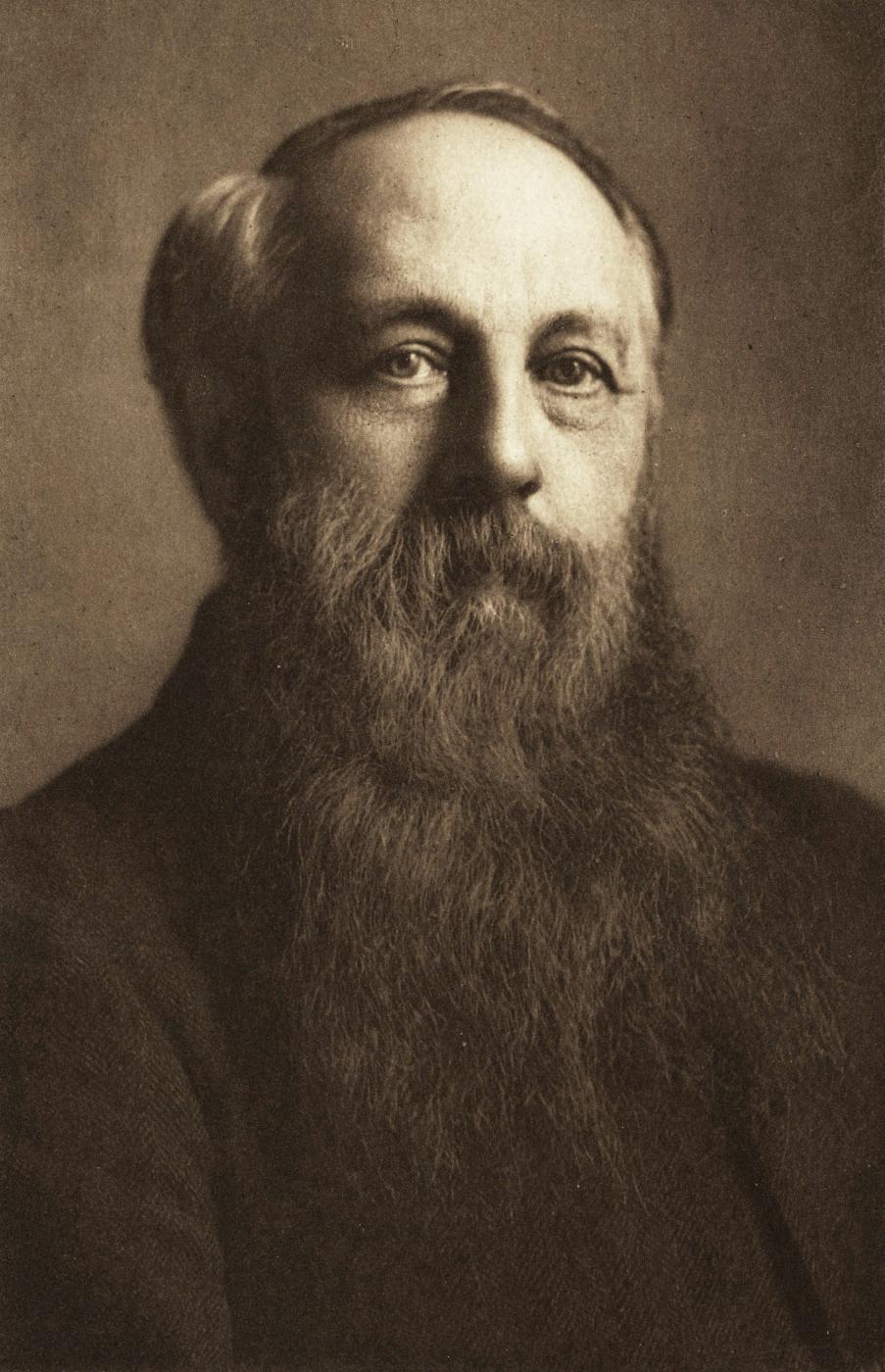
SDF founder Henry Hyndman
The next decade saw more defections from the Left of the SDF by activists who were opposed to Hyndman’s alliance with the very much non-revolutionary Labourites.
It was the First World War that decisively split the SDF, by now renamed the British Socialist Party (BSP).
Hyndman, again showing his old, ruling-class frame of mind, urged the Party to support the war.
But this time, the anti-war Left of the BSP was able to force Hyndman out, committing instead to the position of European Marxists like Rosa Luxemburg who argued that the world war was an imperialist outrage that all principled Marxists ought to oppose.
Hyndman’s nationalist splinter group faded into obscurity as a minnow affiliate of the pro-war Labour Party.
Meanwhile, the BSP proper became the immediate forerunner of the Communist Party of Great Britain (CPGB) after 1917.
The SDF joined Rosa Luxemburg's view in opposing the First World War
See the Rosa Luxemburg tea towel
The interpersonal conflict, ego, and factionalism which characterised the Social Democratic Federation are not exactly atypical in the history of the British Left.
But the Party is unique as a founding organisation of British Marxism, a tradition which has produced far greater figures than the execrable Hyndman.
From Eleanor Marx to the antifascist volunteers who fought against Franco, and theorists and historians like Ralph Miliband and CLR James, they are all part of a radical history that partly began with the SDF in 1881.

